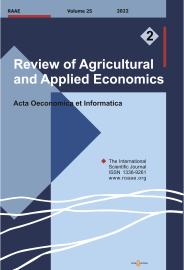KEYWORDS:
landscape planning, participatory planning, stakeholder approach, bottom-up approach
DOI NUMBER:
10.15414/raae.2014.17.02.92-102
ABSTRACT:
Although it has been recognised that a stakeholder approach is important in effective landscape planning, a lack of objective methods which include stakeholder opinions in planning projects exists. In this paper we describe a new experimental method for creating landscape planning maps based on stakeholder opinions. During interviews, stakeholders are asked to rate the suitability of individual landscape elements and to visualise their ideal landscape plan. The results of the interview are then used to create a new landscape plan for the area. This method is illustrated by means of a case study in the Netherlands in which four stakeholders were included: the municipality, an agricultural organisation, the water board and a nature conservation organisation. In addition, a sensitivity analysis was performed in order to determine the robustness of the proposed method. Changing weights given to the individual stakeholders did not have a significant influence on the resulting landscape plan, indicating that this is a promising method for participatory landscape planning.
Please Cite this Article as:
Anouk GEVAERT, Stefan Jonathan KUPERS, Wim HEIJMAN (2014) Participatory Landscape Planning: The Case Of The “westvaardersplassen” In The Netherlands. Review of Agricultural and Applied Economics. XVII (Number 2, 2014): 92-102. doi: 10.15414/raae.2014.17.02.92-102
URL for sharing:
https://roaae.org/1336-9261/doi/abs/10.15414/raae.2014.17.02.92-102
FULL TEXT PDF:
▼ direct download link| view online in fullscreen ▲

